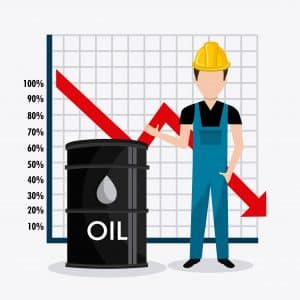
The dreaded Corona Virus is affecting us in every possible way. However, in all of this, there is one small silver lining as we will be experiencing lower fuel prices due to the global oil prices declining at a rapid pace.
The expected Petrol Price decrease is set to be at 19 c p/l and diesel at 54 c p/l. Illuminating Paraffin is set to fall by 68 c p/l and the SMNRP (Single Maximum National Retail Price) for Illuminating Paraffin is set to fall by 91 c p/l
Unfortunately, this seems to be where the good news ends for now.
Not only are our Fuel and Oil markets affected but since the outbreak global stock markets have been tumbling and have reversed almost all positive momentum in the oil market. The oil market continues to see a loss and decline as the virus continues to spread.

So how and why is this virus affecting our oil prices:
Firstly, travel restrictions have been put in place across the globe, limiting, of course, the use of jet fuel, supply chains slow down as companies are forced to send their workers home. Production, therefore, is slowing down quite significantly, directly affecting the oil consumption.
Secondly, the stock market. Of course, for every action in all things, there has to be a reaction. As the global economy keeps declining, so are the projections in terms of the oil. Thus, creating uncertainty as to what the final impact of this virus will be.
The short-term implications are dependable on how quick and efficient the governments are able to contain the outbreak, which in turn will allow us to start seeing what the lingering effects would be.
The IEA has come up with 2 scenarios as to how this epidemic will affect the global oil demand this year.
Worst case scenario: The current measures in place to contain the virus fail and the global demand continues to plumed – causing a fall of 730 000 barrels a day.
Best case scenario: The virus is contained globally and there is a rise in global demand by 480 000 barrels per day.
Whilst the impact of this virus might be temporary, the longer-term challenges will certainly remain for our suppliers, especially those heavily dependent on oil and gas revenues.
A medium-term outlook published by the IEA, examining the fundamental issues in supply, trade, refining and demand to 2025, following the contraction and sharp rebound in 2021, the annual growth in oil demand is set so slow as the consumption of transport fuels slows down even more.
The expected growth between 2019 and 2025 is at an average annual rate of just below 1 million barrels a day.
The demand rising over the period as a whole is about 5.7 million barrels per day of which China and India account for about half. Simultaneously the worlds’ oil production capacity forecast is expected to rise by about 5.9 million barrels a day with more than three quarters of it being produced by non-OPEC producers.
However, it is forecasted that the production growth in the US and other non-OPEC countries is set to lose some momentum allowing the OPEC producers from the Middle East to turn the taps back up to help keep the global oil market in balance.
The medium-term Oil 2020 market report, also takes into consideration the impact clean energy transitions will have on the oil market trends. Growth for gasoline and diesel is predicted to weaken as coutires across the world start implementing policies to improve efficiency and cut carbon dioxide emissions.
Electric vehicles are also increasing in popularity. However, the impact of energy transitions on oil supply remains unclear.
As new business strategies and investments are being contemplated due to the coronavirus crisis the global oil industry will be facing further uncertainties and the overall impact remains unknown.

